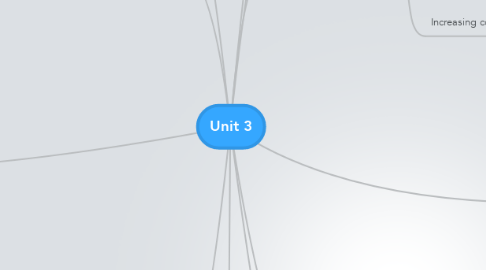
1. Fixed & Varible costs
1.1. Fixed = Don't change with ouput
1.2. Varibale = change with output
1.3. TC = FC+VC
1.3.1. zero output where FC=VC
2. Price Discrimination
2.1. Conditions
2.1.1. Difference in price elasticity of demand
2.1.2. Barriers to stop consumers re-selling
2.2. Types
2.2.1. 1st degree = charging maximum an individual consumer is prepared to pay, no consumer surplus
2.2.2. 2nd degree = selling batches of a product at lower prices that other batches, suplementary profit made and can secure additional market share
2.2.3. 3rd degree = charging different prices for the same product to different segents of the market, most frequent form, can be sperated by time, geogrphay and status of consumer
2.3. Consequences
2.3.1. Consumer surplus lost in most cases and price is above marginal cost of production reuslted in consumer welfare loss
2.3.2. Producer turns consumer surplus into supernormal profit
2.4. Occurs when a producer sells an identical product to different conusmers at differenct prices for reasons unrelated to cost
3. Concentrated market
3.1. Concentration ratio (CR4) = Value of output form 4 largest firms / value of industry ouput
3.2. Why?
3.2.1. Market power increases pricing power -- Managerial objectives -- Profit motivation -- Economies of scale -- Diversify risk
3.3. How?
3.3.1. Internal growth
3.3.1.1. Supernormal profit invested to increase variable and fixed factors
3.3.2. External growth
3.3.2.1. integration
3.3.2.1.1. Horizantal = same industry & stage of production
3.3.2.1.2. Lateral = Related but not identical
3.3.2.1.3. Vertical
3.3.2.1.4. Conglomerate = Unrelated
3.4. Outsourcing production operations
3.4.1. Technological = Sub-contract communication service to other countries where costs are lower
3.4.2. Increased competition - Pressure on businesses to achieve lower costs
3.4.3. Pressure form financial markets to achieve profitability
4. Effeciency
4.1. Allocative = Production in line with consumer preference. P = MC
4.2. Productive = Occurs at the lowest point on AC curve
4.3. X = Not producing on lowest point of AC curve (organisational slack usually associated with monopolies
4.4. Static = occurs at given point Dynamic = occurs over time
4.5. surplus
4.5.1. Consumer = Difference between price consumer is willing to pay and market price
4.5.2. Producer = Difference between price producer is willing to supply and market price
5. Monopoly
5.1. Technically it is where the is only one firm in the industry but the practical use refers to when a firm has 25% or more market share
5.2. Barriers protecting monopoly
5.2.1. High fixed costs e.g. pharmaceuticals
5.2.2. Economies of scale
5.2.3. Brand loyalty e.g. apple
5.2.4. Legal barriers e.g. google
5.2.5. Control of F of P and retail outlets
5.2.6. Predatory pricing e.g Tesco
5.3. Strategic entry detterence
5.3.1. Hostile takeovers e.g. Windows
5.3.2. Product differentiation
5.3.3. Capacity expansion
5.4. Efficiency
5.4.1. Charging higher price and restricting output creates a deadweight loss.
5.5. Costs and benefits
5.5.1. Abnormal supernormal profit causing allocative, productive and X ineffeciency, deadweight loss to society
5.5.2. Economies of scale can lead to lower prices for consumer, dynamic efficiency from supernormal profits, internationally competitive
6. Perfect Competition
6.1. - Many buyers/sellers - No barriers of entry - Identical products - Perfect information - No externalities & economies of scale
6.1.1. Un realistic. Closest example would be the currency exchange market
6.2. Short run supernormal profits/losses disappear in long term due to firms entering/leaving the industry
6.2.1. Short run shot down condition = P < AVC
6.2.2. Long run " " " = P < AC
6.3. Benefits of competiton
6.3.1. - Lower prices - Lower total profits - Promotes innovation
7. Profit Maximisation
7.1. Normal = sufficient to keep all F of P in present use AC = AR
7.2. Supernormal = Anything above normal
7.3. role of profit
7.3.1. Allocate scarce resources Act as market signal Promote innovation Increase investment
7.4. Principle agent problem = Control of the business is not by the risk-bearers and information is hidden
7.5. MC = MR
8. Costs & Revenues
8.1. SRAC
8.1.1. Diminishing returns = Change in total output rise and then falls as more units of vairable input are added
8.1.1.1. Increase = specialisation
8.1.1.2. Decrease = overcrowding of variable input to a fixed amount of capital input
8.1.2. Short run = at least on F of P fixed
8.1.3. Marginal product = Change in output when an another unit of input is added
8.2. LRAC
8.2.1. Economies of scale = falling AC as output increases
8.2.1.1. extranal = clustering to purachse cheaper, share skills. AC shifts up
8.2.2. Diseconomies of scale
8.2.2.1. LRAC rises
8.2.2.1.1. central, co-ordinatino, co-operation
8.2.2.2. external = overcrowding of infrasructure, AC shifts down.
8.2.3. Shifting SRAC
8.3. Minimum Efficient Scale
8.3.1. Where LRAC is lowest
8.3.1.1. All economies of scale exhausted
8.3.2. MR = 1/2 AR TR = P x Q AR = TR/Q
9. Oligopoly
9.1. competitve
9.1.1. non-price competition
9.2. collusive
9.2.1. price leadership/tacit collusion
9.2.1.1. joint profit max. as supply is controlled
9.2.1.2. benefits?
9.2.1.2.1. Joint R&D
9.2.1.2.2. Adoption of common standards
9.2.2. game theory
9.2.2.1. short-run incentive of undercutting price
10. Contestable Markets
10.1. Barriers of entries determine performance (not no. of firms)
10.1.1. Market is perfectly contestable when entry & exit costs = 0
10.1.2. Improving contestability lowers profit margins
10.2. Reality
10.2.1. No market is perfectly contestable
10.2.2. Firms protect themselves with patents etc
10.3. Increasing contestablity
10.3.1. Entrepreneurs innovating
10.3.2. De-regulation
10.3.3. Technological change - e-commerce
10.3.4. Competition policy
10.3.5. Single market
11. Market Structure & Technology
11.1. Innovation
11.1.1. Improving cost-adavatnge
11.1.2. Protects country's comparative advantage
11.1.3. Long-term growth, lower inflation, higher employment
11.1.4. Social benefits in saftey or quality
11.2. Technology
11.2.1. production
11.2.1.1. AC shifts downwards, capital intensive
11.2.1.2. First/second mover advantage
11.2.1.3. Dynamic efficiency improves
11.2.2. consumption
11.2.2.1. Supply shifts out, lower pirces, quality increase, new products
11.2.3. Competition
11.2.3.1. can reduce barriers & concentration plus open global market
11.2.3.2. Reinforce monopoly power
11.2.3.2.1. Patents and R&D
